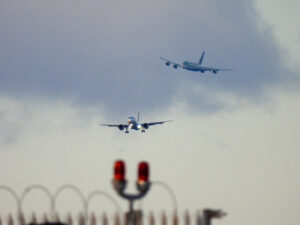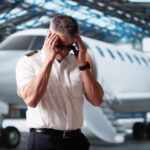Understanding Aircraft Operating Weight
As a pilot, understanding the intricacies of aircraft operating weight is crucial for safe and efficient flying. This concept not only affects flight performance but also plays a pivotal role in ensuring compliance with safety regulations. Let’s explore what aircraft operating weight entails, how it’s calculated, and why accuracy in these calculations is paramount.
What is Aircraft Operating Weight?
Aircraft operating weight refers to the total weight of an aircraft at any given moment during operation. It includes the basic empty weight (BEW) of the aircraft plus the weight of the crew, passengers, baggage, and fuel. It is a dynamic figure that changes with the addition or removal of any component that influences the aircraft’s mass.
Calculating Aircraft Operating Weight
Calculating the aircraft operating weight involves several steps:
- Determine the Basic Empty Weight (BEW): This is the weight of the aircraft with all operating fluids but without fuel or payload.
- Add the Crew Weight: Include the weight of the pilot(s) and any additional crew members. Standard weights or actual weights can be used as per the operating manual.
- Account for Passengers and Baggage: Each passenger and their baggage have specific weight contributions. Use standard weights provided by the FAA or actual weights where applicable.
- Include the Fuel Weight: Calculate the weight of the fuel on board. Fuel weight can be derived from the density of the fuel and the volume in gallons or liters.
- Sum Total Weight: Add all these components together to get the total operating weight.
Consequences of Incorrect Calculations
Misjudging the aircraft operating weight can have serious repercussions:
- Performance Issues: An overweight aircraft may struggle with takeoff, ascent, and maneuverability, compromising safety, as was the case of Air Midwest Flight 5481 in 2003 which killed all on board.
- Structural Strain: Exceeding weight limitations can stress the aircraft’s structure, leading to potential damage.
- Regulatory Non-Compliance: Failing to adhere to weight limits breaches regulatory guidelines, potentially leading to fines or operational restrictions.
Ensuring Accurate Calculations
Accuracy in calculating aircraft operating weight is vital. Here’s how to ensure precision:
- Adhere to Standard Operating Procedures (SOPs): Follow your aircraft and company SOPs meticulously. These documents provide detailed guidance on weight calculations and should be your primary reference.
- Regularly Update Your Aircraft’s Weight and Balance Records: Ensure that any modifications to the aircraft are reflected in updated weight and balance records.
- Cross-Check Calculations: Use digital load sheets and software to verify manual calculations. Redundancy in checking can catch errors early.
- Conduct Pre-Flight Checks: Before each flight, conduct thorough pre-flight checks to confirm that actual weights align with your documented calculations.
- Continuous Learning and Training: Stay informed about best practices and participate in training sessions that emphasize weight and balance calculations.
Weight and balance are critical factors in flight safety and operational efficiency; your diligence in managing aircraft operating weight can significantly impact the success of your flights. By adhering to SOPs and maintaining rigorous checks, you contribute not only to the safety of your passengers but also to the integrity and longevity of your aircraft.
RELATED CTS TRAINING
RELATED CTS TRAINING










